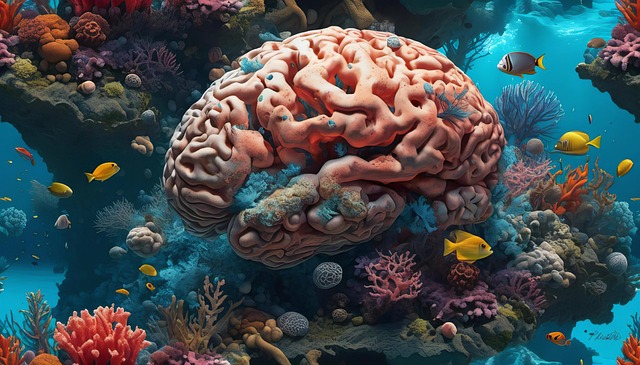Brain CT scans are crucial for stroke diagnosis, but radiation exposure is a concern. Modern scanners and techniques, like iterative reconstruction algorithms, minimize dose without compromising image quality. Targeted scanning, understanding risks, discussing scan necessity, and exploring alternative methods like MRI and CTA can reduce radiation exposure while ensuring effective stroke care through enhanced imaging techniques in stroke diagnosis imaging.
In the quest for accurate stroke diagnosis, brain CT scans have become invaluable tools. However, concerns surrounding radiation exposure necessitate a balanced approach. This article delves into the intricate details of radiation dose in brain CT scans, exploring how excessive exposure can lead to risks and highlighting strategies to optimize imaging techniques. Additionally, it introduces alternative methods for stroke detection, offering a comprehensive guide for healthcare professionals seeking effective yet safe diagnostic practices in stroke management.
Radiation Dose in Brain CT Scans for Stroke Diagnosis
Brain CT scans play a vital role in stroke diagnosis, providing crucial imaging insights into brain structure and function. However, concerns about radiation exposure are increasingly relevant, as repeated or high-dose imaging can pose risks to health. The dose of radiation during a brain CT scan is measured in millisieverts (mSv). For stroke evaluation, typical doses range from 2 to 8 mSv, which, while within safe limits for most individuals, should be carefully considered, especially for frequent scanners or those with cumulative exposure concerns.
Optimizing stroke diagnosis through CT imaging involves balancing the need for accurate information against radiation risks. Modern scanners and advanced techniques, such as iterative reconstruction algorithms, help minimize dose while maintaining image quality. Additionally, targeted scanning approaches focused on specific areas of concern can further reduce overall radiation exposure during stroke diagnostic procedures.
Understanding the Risks of Over exposure
Understanding the risks of radiation exposure is crucial when considering brain CT scans, especially for stroke diagnosis imaging. While CT scans provide valuable insights into brain health and are essential tools for detecting strokes, repeated or high-dose exposures can lead to long-term health issues. The low-dose radiation from these scans accumulates over time, potentially increasing the risk of cancer, particularly in children and young adults.
In the context of stroke diagnosis, where timely imaging is critical, healthcare professionals must carefully weigh the benefits against the risks. Modern CT scanners are designed with more advanced settings to reduce radiation exposure, but it’s important for patients and caregivers to be aware of these considerations. Discussing scan necessity and exploring alternative diagnostic methods can help minimize radiation exposure while ensuring effective stroke care.
Optimizing Imaging Techniques to Minimize Risk
Optimizing imaging techniques is key in minimizing risks associated with radiation exposure during brain CT scans. Healthcare professionals are continually exploring ways to enhance stroke diagnosis imaging while reducing radiation doses. Advanced technologies like iterative reconstruction algorithms and high-speed scanners allow for higher image quality at lower radiation levels. These innovations ensure that medical teams can accurately assess stroke severity without exposing patients to excessive radiation.
Additionally, leveraging the latest software tools enables radiologists to process images more efficiently, further reducing scan times and, consequently, limiting overall radiation exposure. By adopting these optimized imaging techniques, healthcare providers can strike a delicate balance between obtaining critical diagnostic information and minimizing potential long-term effects of radiation on patients’ health, particularly for recurring or chronic stroke cases that require frequent imaging.
Alternative Methods for Stroke Detection
In addition to traditional brain CT scans, several alternative methods are emerging as promising tools for stroke diagnosis imaging. These innovative approaches aim to reduce radiation exposure while maintaining or even enhancing diagnostic accuracy. One such method involves the use of magnetic resonance imaging (MRI), which employs strong magnetic fields and radio waves instead of ionizing radiation. MRI can provide detailed anatomical information and detect subtle changes in brain tissue, making it valuable for stroke identification.
Another alternative is computed tomography angiography (CTA), a non-invasive procedure that uses X-rays to visualize blood vessels. CTA offers high-resolution images of the cerebral arteries, enabling radiologists to identify occlusions or narrowing that could indicate a stroke. These alternative imaging techniques not only offer radiation dose reduction but also provide complementary information, allowing for more comprehensive stroke diagnosis and treatment planning.
While brain CT scans are invaluable tools for stroke diagnosis, it’s crucial to balance their benefits with radiation exposure risks. By understanding the dose, recognizing potential harms, and implementing optimized imaging techniques, healthcare providers can minimize these risks. Additionally, exploring alternative methods for stroke detection offers promising avenues to reduce reliance on CT scans. Together, these strategies ensure safer care while maintaining effective stroke diagnosis.
